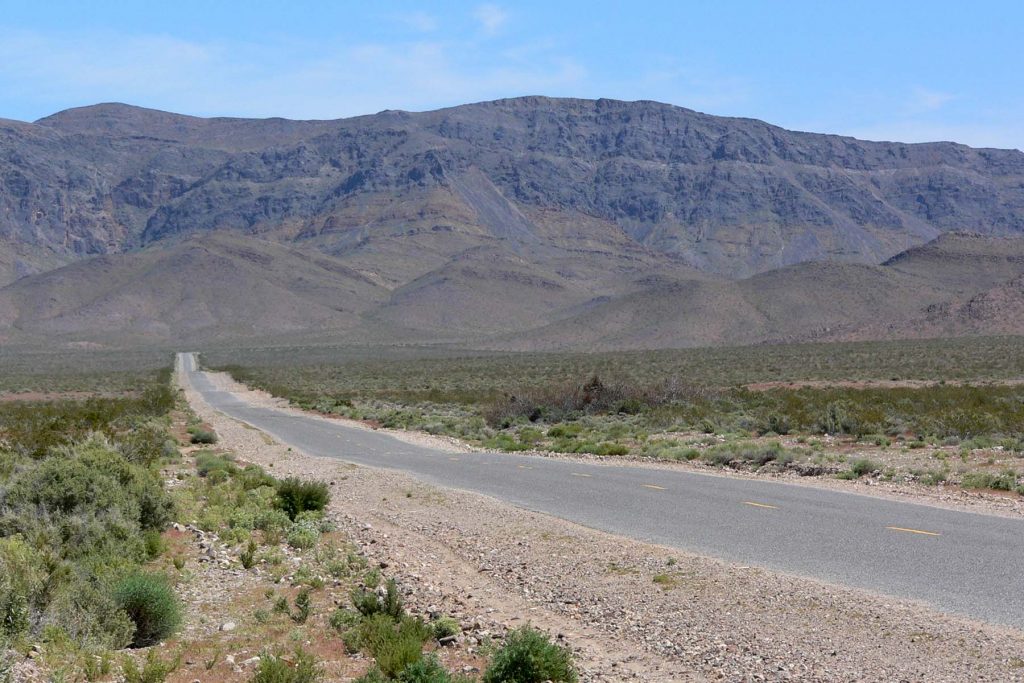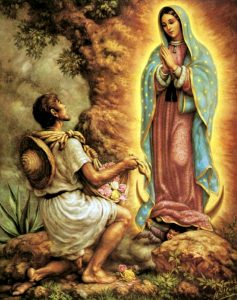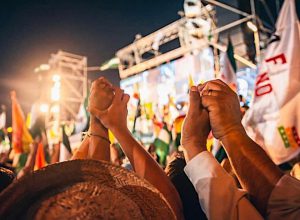Almost every family has a story they can tell about a long distance road trip; it’s hard to find someone who doesn’t. For children growing up today, those stories are about the high speed interstate highways that can get us across the country in four days. These roads didn’t always exist. Before the interstate, travel was very different, and so were many towns across the country. Things changed in the 1950s with the creation of the superhighways that would later crisscross the American landscape. People and goods could be transported faster, but for that convenience, there was a price.
In the movie Cars by Disney/Pixar Studios, the protagonist Lightning McQueen, a race car, finds himself in a small town that grew up with a US highway running through it. The highway was the lifeblood of the town. The residents of Radiator Springs have struggled over the years as a new interstate highway bypassed the once-thriving town. The interstate redirected the traffic from the main street of the downtown with a devastating effect. What used to be a lively main street that led to a beautiful hotel in the mountains became a town with boarded up windows and broken neon signs. The interstate did not benefit the people of Radiator Springs. McQueen tries to deal with the seemingly backwards town folk as he made reparations for damage he did to the town. His goal was to just fix the road, so he could get to his important race.1
Cars may sound like just a cute movie aimed at children, but it is grounded in a harsh reality. Most people in the United States are familiar with the interstate highway system, but they rarely think about the time before it existed and the impact its creation had on small rural communities. The federal government had no role in road creation. Roads were paved by local communities, and most rural roads were still dirt paths. Cross country travel by car could take months. A real highway system would not arrive until the 1950s when President Eisenhower planned the U.S. highway system. As the Ford Motor Company made cars more affordable, people realized something needed to be done. In 1915, a group of people found one solution to this problem. They organized and coordinated the building of an auto highways to connect major urban centers across the Southern United States. This project became know as the Old Spanish Trail Auto Highway.
Lightning McQueen needs to make his way from the East Coast to California for the Piston Cup Championship race. He directs Mack, his transport driver, to travel the interstate to get there as fast as possible so he can meet with a potential new sponsor. After an accident leaves him lost in an unfamiliar area, he winds up on a U.S. highway and inadvertently causes damage to the road that runs through a small nearly abandoned town. The local judge orders McQueen to repair the damaged road before he can leave and continue on his way to the big race. He is reluctant and annoyed at both the punishment and the people. His escape attempts are foiled, and he soon realizes that the only way out is to repair the road correctly.

McQueen is dismissive of the townspeople they do not impress his celebrity sensibilities. He sees them as just a bunch of hopeless hicks living in a dying town with no future and no use to him. His attitude changes when he becomes friends with Sally, a lawyer from LA who has relocated to Radiator Springs. She has given up the stress of big city life for the tranquility of the small out-of-the-way town.
McQueen’s attitude changes when Sally shows him the history of the town. The broken windows and the dark signs are the constant reminder of what the town use to be before the interstate. The main street thrived as the businesses catered to the traffic traveling the highway. Thrilled when news of the new interstate being built reached the town, the residents believed even more people would come to their town bringing more economic opportunity and prosperity. However, they could not have been more wrong. The interstate did not directly connect to the town. The route chosen bypassed the town entirely, taking the traffic with it. Radiator Springs was forgotten as a constant flow of cars now sped right past the small town. Long time residents started to leave, and shops went out of business. The once thriving, carnival-like atmosphere of Main Street had fallen silent to save motorists ten minutes of driving time.
Like the railroads before them, highways were the lifeblood of many small towns. Today, motorists are so used to the interstate, which was designed for speed, not for scenic journeys. The interstates create the fast travel by avoiding towns and smaller cities. This design took the traffic flow away from those urban areas causing economic loss for those places. The U.S. highways ran through the towns and cities, providing a large economic benefit to them.
In the 1920s, the people working to get The Old Spanish Highway built used this economic motivation to entice communities into building the road. If communities built the road, then more cars would flow though the town, bring more business to the shops, restaurants, and gas stations located on the route. There was no federal transportation department at the time, and so there were no federal programs handing out dollars for the construction of roads or highways. All the construction needed to be done locally at the state or city level. The OST planning committee held meetings to show the communities the importance of bringing the road to their town. These communities had to promise to complete construction on their section in a certain amount of time, or the road would be given to another community who would fulfill the obligations. Many communities were interested, and the efforts to win the road rights were often led by the members of the local Chamber of Commerce. These cities understood the economic impact of the road running through their community and how it would benefit them.2

Charlotte Kahl is one of the people trying to preserve those memories of the neon Main Streets that used to be part of the Old Spanish Trail. She has led the effort to locate and map the original route the Old Spanish Trail, a route that ran across the Southern United States from St. Augustine, FL to San Diego, CA. The first part of her mission has been to locate where the road ran. It was not well maintained over the years, and the creation of both the U.S. highway system and the Interstate system caused parts of it to fall into disuse. She has been out in the field following old guides, oral histories, and any other clues she can find to trace the original path the road followed. The second part of her mission has been to preserve the bridges, gas stations, motor lodges, architecture, and anything else that was a part of the Old Spanish Trail. Like the businesses of Radiator Springs, the moving of the Old Spanish Trail caused many businesses to close. Old gas stations with their Art Deco style and motor lodges that provided not only a room for travelers, but a private garage as well now sit abandoned and nearly forgotten by the former road. Some of these are coming up on the 100th anniversary of their construction, and there are people who want them preserved. Like Sally, Charlotte considers these places worth saving and has made it her mission to do just that.3
The high point of the movie occurs when McQueen completes his repairs to the road. However, he does not just stop there. He fixes the neon signs and give the remaining residents one night of nostalgia. They celebrate the freshly paved road by cruising the main street strip just like they use to before the interstate was built. It was a beautiful night, interrupted when McQueen’s team comes to pick him up and take him to the race. After the race is complete McQueen decides to locate his racing team headquarters in Radiator Springs, helping to put the town back on the map.

Charlotte has been working hard to make sure the Old Spanish Trail has its happy ending too. The big moment will be when the cars roll down the road one more time to commemorate the 100th anniversary of the initial completion of the road. Shortly after the road was completed in 1929, there was a cross country motorcade from St Augustine FL, to San Diego, CA and back to publicize the newly completed project. Unlike the residents of Radiator Springs, not everyone is jumping on the nostalgia bandwagon. The business owners who strongly supported the project 100 years ago have little interest today. They do not believe the road, or any commemoration of the road will have any benefit to their businesses. Instead of getting the Chambers of Commerce on board, Charlotte and her committee have been targeting historical societies and preservationists, and she has been finding success with these groups. These organizations have been helping the committee to locate and preserve the artifacts associated with the Old Spanish Trail Auto Route. There might not be any neon signs lighting the way, but when the motorcade rolls down the Old Spanish Trail for that 100th anniversary trip the feelings will be very real.
- Cars, Directed by John Lasseter and Joe Ranft, by John Lasseter and Joe Ranft, Produced by Darla K. Anderson, 2006. ↵
- Interview with Raymond Kirsh by Gabriel Cohen and S. Michael Sleeter, April 9, 2019. ↵
- Interview with Charlotte Kahl by Gabriel Cohen and S. Michael Sleeter. Oral History of the Old Spanish Trail . March 11, 2019. ↵



34 comments
Kaleb Werku
Cars are one of my favorite Pixar movies so this article naturally intrigued me. The funny thing is I thought the places in Cars were just made up especially radiator springs. Now I want to go on a road trip and experience it for my self. Hopefully, after college or even this year, I can pay a visit. Nevertheless, the thing that saddens me was the fact that this little town was devastated by the highway, but I’m sure the community is strong and they will persevere.
Elisa Nieves
Cars has always had a special place in my heart for it’s scenery and unifying message. It’s one of those movies that can be seen over and over and experienced differently each time. I think it’s really important to look into the more real aspects of it because there’s a lot of them. I really love the way the author connected the narrative to a real life situation by showing how different parts were similar or different to the real life story of Charlotte Kahl, a leader of the initiative to reestablish the Old Spanish Trail. I had heard that it was a real place and that Route 66 was real too, but I hadn’t realized there was a real story behind these places and that the abandonment of them is really real. So, thank you to the author for opening my eyes to it.
Gabriella Urrutia
I enjoyed reading this article because Cars was one of my favorite movies growing up. It’s interesting to know that the movie was based on something real and that it was showing problems that were being experienced in small towns. I never realized that building highways could affect small towns or communities.
Juan Arceo
The movie Cars was one of my favorite movies, if not my favorite movie of my childhood. I never knew that Radiator Springs was an actual spot and if I wanted to visit this legendary place before, you better believe that I want to experience what Lighting McQueen experienced on his road trip and just learn to appreciate the view of Route 66.
Hannah Hennon
Cars was one of my favorite movies as a kid! I did not know that Radiator Springs was based off a real place. I also never realized how much interstates took away from ore rural communities. I think about how many times my family and me have traveled by interstate, and it makes sense to why we rarely ever see a rural city on the way especially when we would take an exit. I never really thought about it, but this article enlightened me!
Bruno Lezama
I enjoyed reading this article. I didn’t know that Cars was inspired in a real place. It was surpassingly seeing that the images from Radiator Springs look almost the same as the movie. I believe that this was a hard work to do for Pixar because they had to research everything about these places in order to create it the most accurate possible. Pixar also researched about the History of this place to put it in the movie Cars. I think that this real history makes Cars even a better movie to see.
Audrey Uribe
Such a throwback to my childhood! I never would have guessed cars was based on a real place that is around still. Such a accurate representation of the small town historical figures can be replaced by more advanced features like highways. Sad that innovation can be a negative in our society. Overall this article was very precise and had a great story to tell.
Vania Gonzalez
I think this article is so cool like who would have known that Cars was based on a real life area that we could visit one day that’s amazing. And I really like how you told the story of the making of the road and not just like the story of the movie it is just all based on the actual road and it’s nice features and historical stops.
Steven Clinton
Great Article! The movie cars shares a real-world issue plaguing many small towns throughout the country. The US Highway System was created for efficient transportation, and that took away from many communities along the countryside. The idea of scenic enjoyment faded with the development of the US Highway System. Its weird how innovations created with good faith, can cause harmful ramifications.
Benjamin Pampackal
The story really is amazing. This article brings out the true meaning to my childhood, as one of my favorite movies of all time. This article brings out a different point that I for sure didn’t think about or know about when traveling. My family and I actually travel a lot and it’s usually its done by road. Just this past summer we drove from SA to all the way to St. Louis, Chicago, Niagara Falls, then New York City, and Baltimore. I can defiantly see the devastation that cities like radiator springs must have been like, because of the loss of business and customers, but even more the loss of excitement and seeing new faces and meeting different people.